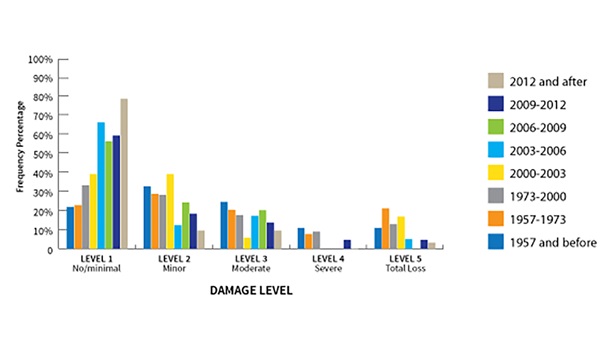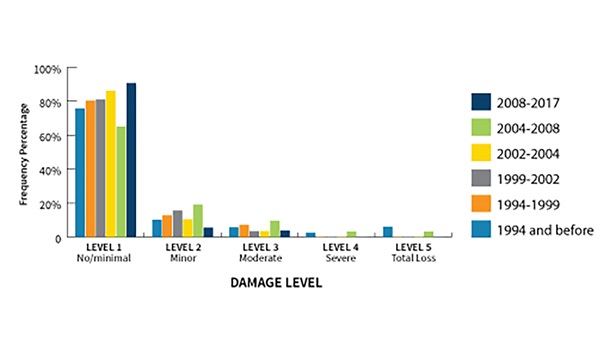Damage Assessment from Hurricanes Harvey and Irma
In 2017, regions of Texas and Florida experienced unprecedented damage due to Hurricanes Harvey and Irma, respectively. A recent Texas A&M study, commissioned by NAHB, sought to determine how building code year impacted the amount of damage homes sustained during these weather events. The study found that, in Texas, homes built to the International Residential Code (IRC) after 2003 performed much better during the severe weather events than older homes. The study also found that Florida homes built after 1994 and to the Florida-specific building code based on the IRC were more resilient to wind damage.
The study, conducted by the Zachry Department of Civil Engineering at Texas A&M University, found that building to the IRC was very effective in preventing the destruction of homes due to wind during Hurricanes Harvey and Irma and resulted in significantly less damage to wall and roof coverings and loss of those components while also minimizing window breakage.
Prior to this study, anecdotal reports, including statements in the Federal Emergency Management Agency’s damage assessments and media coverage, suggested that homes built to the IRC performed well in both states. However, there was little empirical evidence to support those claims.
To better understand building performance, NAHB contracted with Texas A&M University to conduct a statistical analysis of wind damage to residential buildings affected by Hurricanes Harvey and Irma using publicly-available damage assessments collected by teams funded by National Science Foundation rapid-response grants. Almost 2,000 assessments collected in Texas and 1,100 assessments collected in Florida formed the basis of the study.
Method
For each assessment, the project team classified the observed damage for the overall home and for individual components of the walls and roof of the home. The level of wind damage to each component was rated on a scale of one to five, ranging from no damage to total/complete loss:
- Level 1 – No/minimal damage
- Level 2 – Minor damage
- Level 3 – Moderate damage
- Level 4 – Severe damage
- Level 5 – Total loss
After determining which wall and roof components suffered the most wind damage, the team charted the levels of damage to those components based on the year of construction.
Results: Texas

A look at roof and wall damage assessment results for Texas, as well as the local building codes.
Results: Florida

A look at roof and wall damage assessment results for Texas, as well as the local building codes.
Summary and Conclusion

Analysis on which components were most affected by the hurricanes, and how effective IRC was in preventing wind damage.



